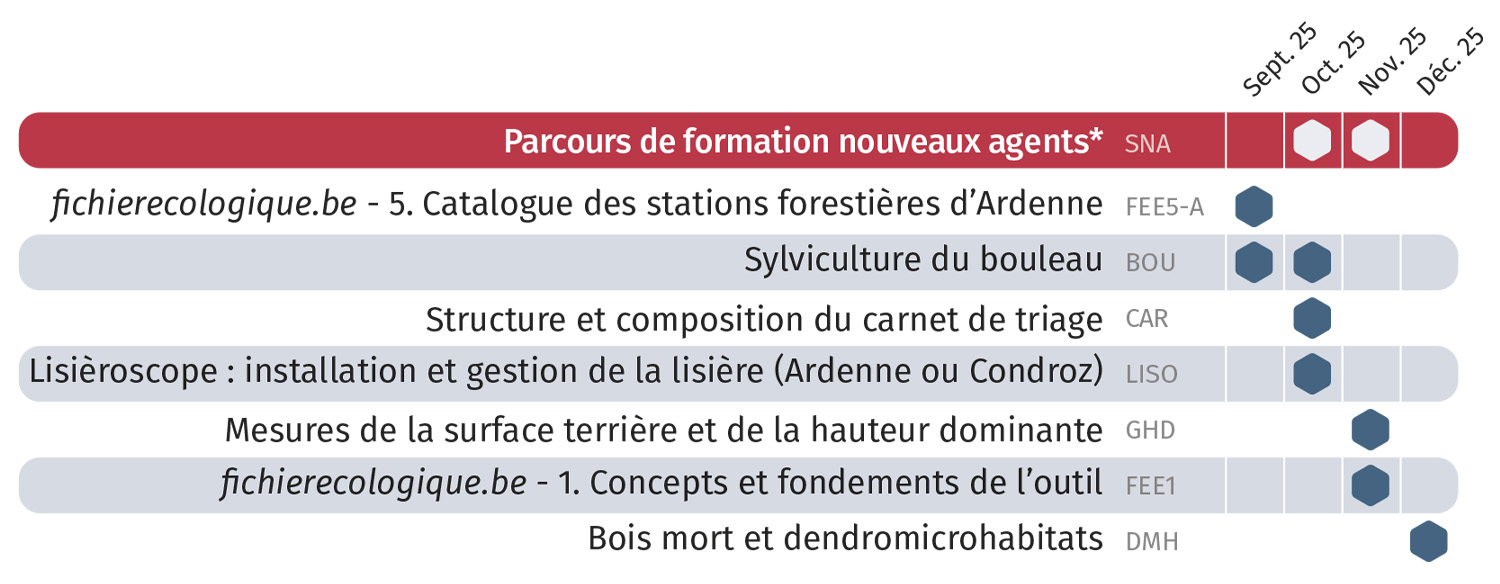Inscription DNF
Catalogue général de formations
Do you have specific needs for yourself, your organisation, your employees or your co-owners?
Do you want us to create a specific training module for you, or are you interested in participating in one of our existing modules?
Contact us as soon as possible!
We will discover the best way to adapt to your needs and find a date on the calendar.
5 types de formation
Training Module
Individual registration.
In the forest, on a dedicated device, or on your plots.
Support for Irregular Thinning
en traitement irrégulier
Registration by the cantonment head.
- Support in preparing marking instructions
- Support for thinning based on marking instructions.
Thematic Support in Your Plots
dans vos parcelles
Registration by the cantonment head.
- Post-crisis renewal.
- Irregularization in softwoods.
Sessions for New Agents
New agents who joined in 2022 or later benefit from a special dedicated training session - 3 days in November and 2 days in May - with 6 modules
Technical Support on Specific Cases
Call our technical team with your issue to see if we can help you solve it in the field.

Information from the DNF on training courses
NEW
MARF + MART
Support with TREE MARKING in Continuous Cover Forestry (CCF)
1. Support on completing the tree marking instruction sheet - day 1, by the triage (geographic zone) officer– visit of plots to prepare the tree marking instruction sheets
2. Support with tree marking as per the instruction sheets - day 2, with the team, 1 month later – marking some of these trees

1. Support on completing the tree marking instruction sheet

2. Support with tree marking on instruction sheets
Practical application
Preparation
1. Choose a cross section to be put forward for the support on irregular marking.
Criteria to be taken into account: cross section is intended for marking this year and there are one or more plots within whereby the objective is to initiate or continue irregular forest treatment (CCF). Examples: regular plot of spruce to be gradually diversified/irregularised and managed under Continuous Cover Forestry; pure beech forest under irregular treatment and diversification; irregular deciduous or coniferous stands (good light management); management of the understory as part of irregular treatment (e.g.: oak-hornbeam forest formerly treated as TSF); management of mixed forests; candidate plot for the “Resilient Forest – irregularisation” subsidy, etc.
2. Download and complete the instruction sheet part 1 - Information, part 2 - Analysis will be distributed and discussed on the same day).
Equipment. Pencil, field gear, picnic
Location. Please send us the meeting place at least 7 days in advance to info@foretnature.be. The default meeting place is that of the municipality.
Duration. The day starts at 09:00 and finishes at 16:00.
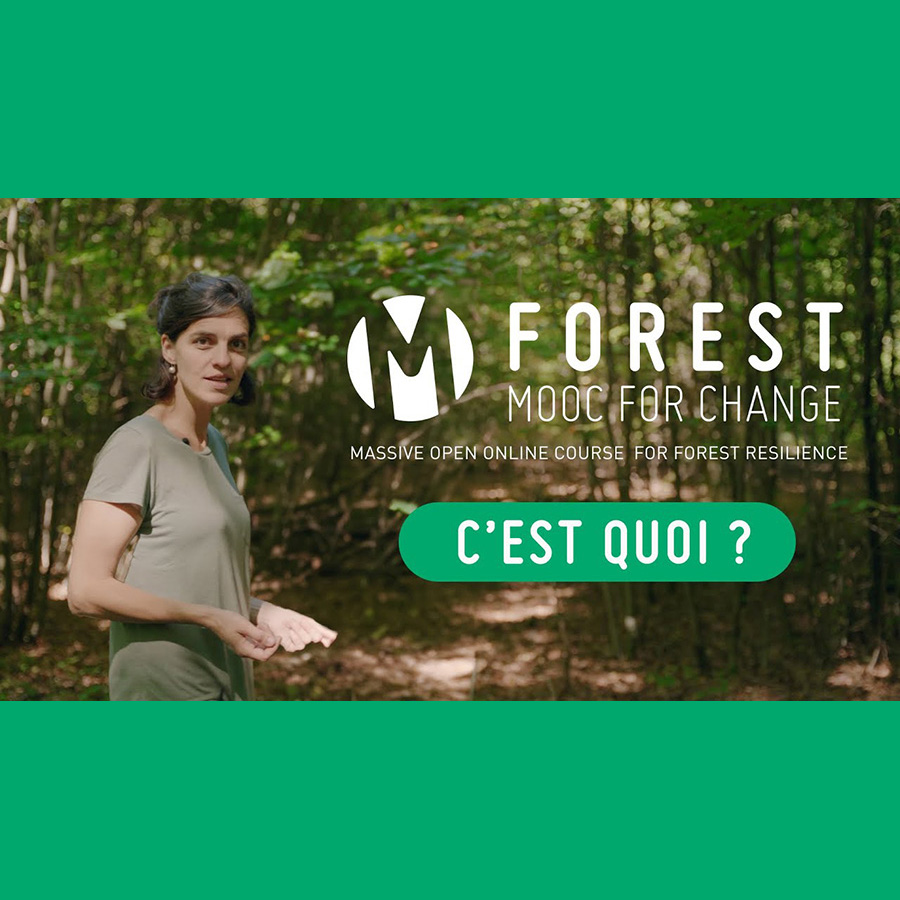
8 semaines
MFC
ForestMoocForChange
Le premier cours en ligne gratuit sur la sylviculture mélangée à couvert continu, disponible en trois langues.
Améliorer le niveau d’information, de connaissances et de compétences des gestionnaires et propriétaires forestiers en matière de SMCC afin d’impacter les pratiques au bénéfice d’une gestion adaptée face aux enjeux des changements climatiques.
- Cours en ligne (Mooc) de 8 semaines
- Quizz final donnant lieu à un certificat de réussite
- ㅤEn ligne
- ㅤIllimité
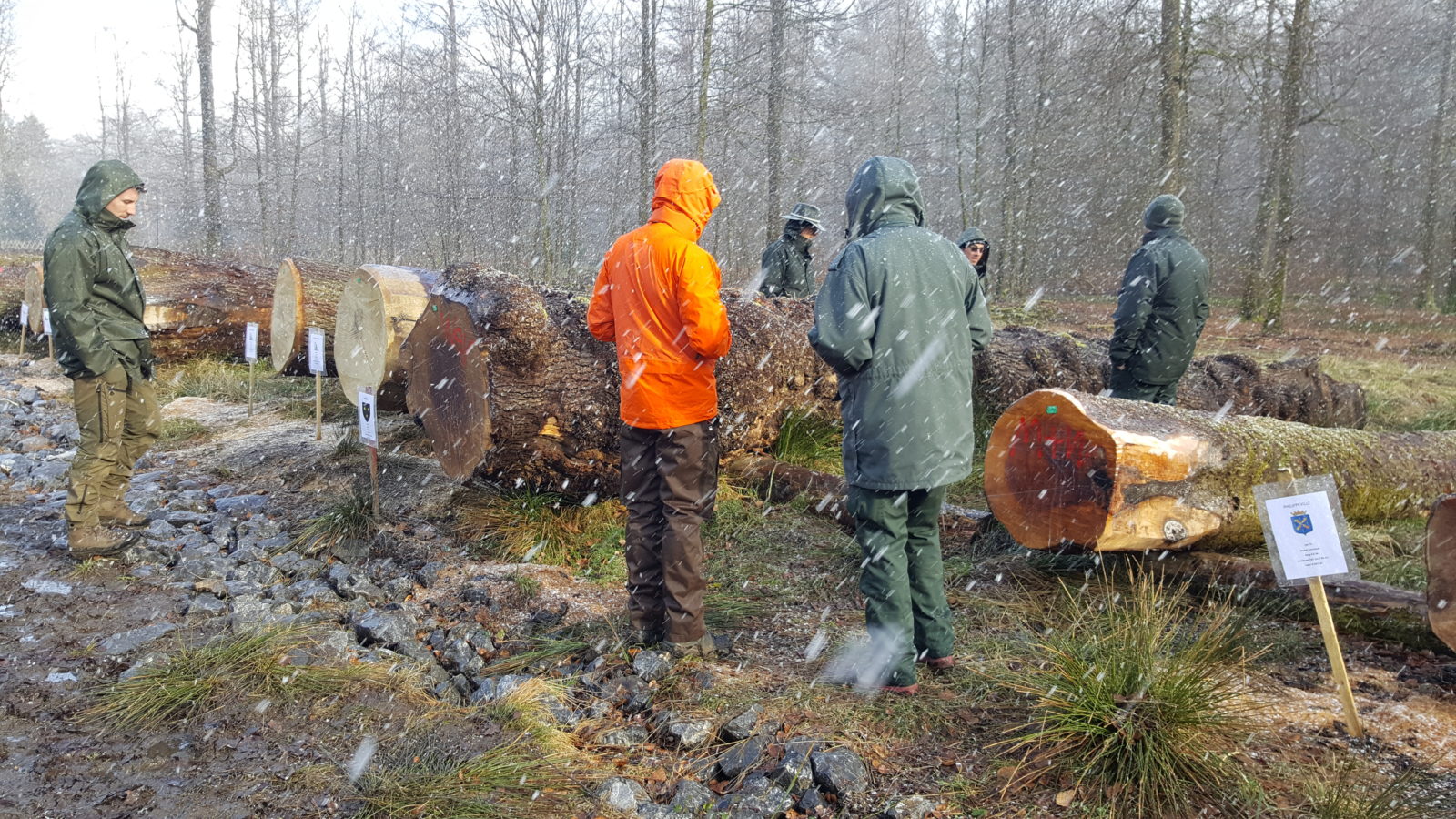
2 heures
PAG
Visit to the Parc à Grumes de Wallonie (log yard)
The Department of Nature and Forests puts several hundred cubic metres of very high quality logs up for sale each year. The logs are carefully selected to keep only the most beautiful ones.
• To review the main defects in wood and their impact on processing.
• To identify quality logs and to recognise the unique peculiarities of species.
• Guided tour of the Parc à Grumes de Wallonie.
• Exercises in recognising species defects and peculiarities.
- ㅤMochamps
- Max. 10 participants

1 day
DMH
Dead wood and dendromicrohabitats
Dead wood, rich in biodiversity, has long been eliminated from the forest out of fear and ignorance of its role in the forest ecosystem. By the commonly used term “dead wood” we mean the notion of “decaying wood”. This term does not apply to completely dead trees; it refers to all forms of decaying wood, existing as part of a living or dead tree standing or on the ground.
Maintaining a significant amount of dead wood in the forest, in all its forms and stages of decomposition, plays a key role in the economical production of sustainable and durable wood, in balance with a functional forest ecosystem.
- To improve understanding of the concept of “dead wood”.
- To understand the roles of dead wood within a functional forest ecosystem.
- To know and understand the minimum threshold data required for dead wood.
- To establish silviculture strategies to suit the various geographic considerations.
- To identify key actions to rapidly increase the presence of dead wood in the forest.
- Exercise in recognising and identifying stages of decomposition.
- Exercise in recognising and identifying dendromicrohabitats.
- Diagnosis of the condition of a stand.
- Identification of the most appropriate silviculture strategies.
- Study of exemplary stands.
- Various demonstration sites across Wallonia
- Max. 10 participants

1 day
FEE2
fichierecologique.be – 2. Understanding forest soils
The training day aims to give each participant the chance to carry out a soil analysis and to interpret the results in terms of constraints relating to the different forest species. Participants will be able to analyse different situations independently and in detail.
• To know how to conduct a soil analysis and use the appropriate tools independently.
• To know how to interpret soil analysis in terms of constraints for forest species.
• To deepen participant knowledge of the biology of the main forest species.
Different sites are selected to represent the main soil environments present in Wallonia. Participants are taken to different stations that represent the same environment. The main soil characteristics are assessed and interpreted to fully understand their impacts on species.
- Different sites in Wallonia to understand the main soil environments
- Max. 10 participants

1 day
FEE3
fichierecologique.be – 3. Interpreting the indicator species of flora
Indicator flora can provide valuable information for interpreting the ecological conditions of a forest station. It allows us to identify characteristics relating to mineral wealth and humidity and potentially also to clarify the water and trophic levels of the Ecological Species Database, or to provide additional information in a soil survey.
• To recognise the main indicator plants of the municipalities visited.
• To be able to interpret a floristic list to identify the main characteristics of the station (richness, water supply).
A choice of several routes that correspond to the different contexts encountered by officers: Ardenne (Mirwart), Famenne-Calestienne (Rochefort), Condroz (Namur), etc. Different locations are selected to represent the main stations. Participants make a floristic list, the characteristics of which are linked to the mineral wealth and water supply of the station.
- Various sites in Wallonia
- ㅤMax. 8 participants
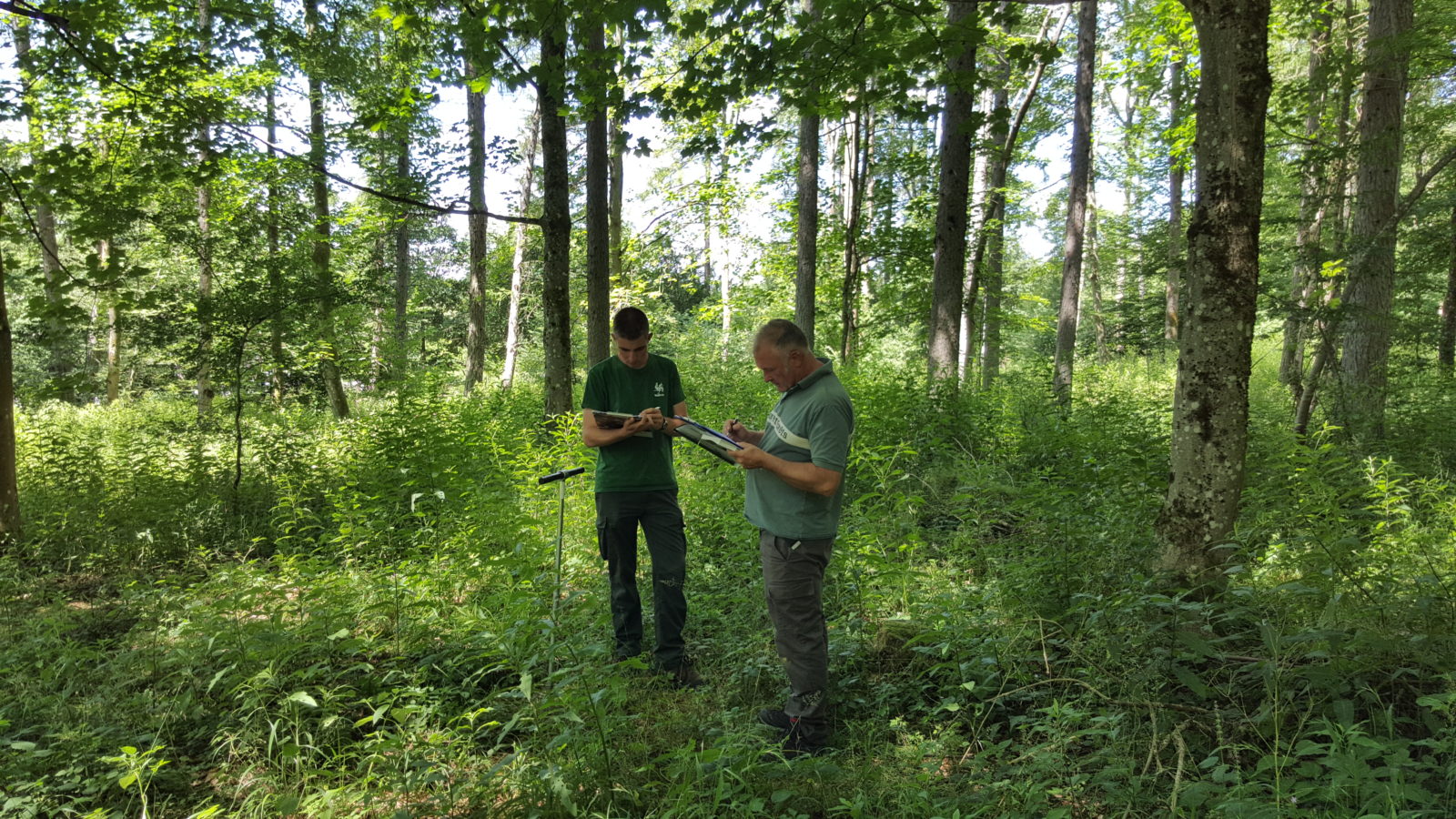
1 day
FEE4
fichierecologique.be – 4. Interpretation using integrated tools
The new version of the Ecological Species Database allows the conscientious user to make an informed choice when attempting to regenerate stands. The training modules provide a fully effective introduction to the tool (Module 1 – Purpose of the tool and its basis for use), a good understanding of forest soils so that you can make any necessary adjustments and validate the parameters resulting from mapping in order to properly consider the constraints linked to the station (Module 2 – Understanding forest soils) and a floristic analysis, which allows a diagnosis to be made using the vegetation present (Module 3 – Indicator species of flora). The aim of this fourth training module is to expose participants to all the available tools so that forestry officers can make comparisons and take advantage of the range of tools available, particularly when they reveal differences in results or performance.
Prerequisites
To have completed the three previous modules (“Fundamentals of the tool”, “Understanding forest soils”,
“Interpreting the indicator species of flora”)
« Interpréter la flore indicatrice »)
• To be able to use all fichierecologique.be tools to their full potential.
• To carry out soil surveys in sometimes complex situations and to be able to interpret the results.
• To master the main ecological constraints for species.
• To be able to interpret results that sometimes differ between tools
• Review of the use of different tools (website, soil survey, floristic list).
• Practical exercises, preferably within the triage(s).
• Confrontation of results of different approaches.
- Various sites in Wallonia
- ㅤMax. 8 participants
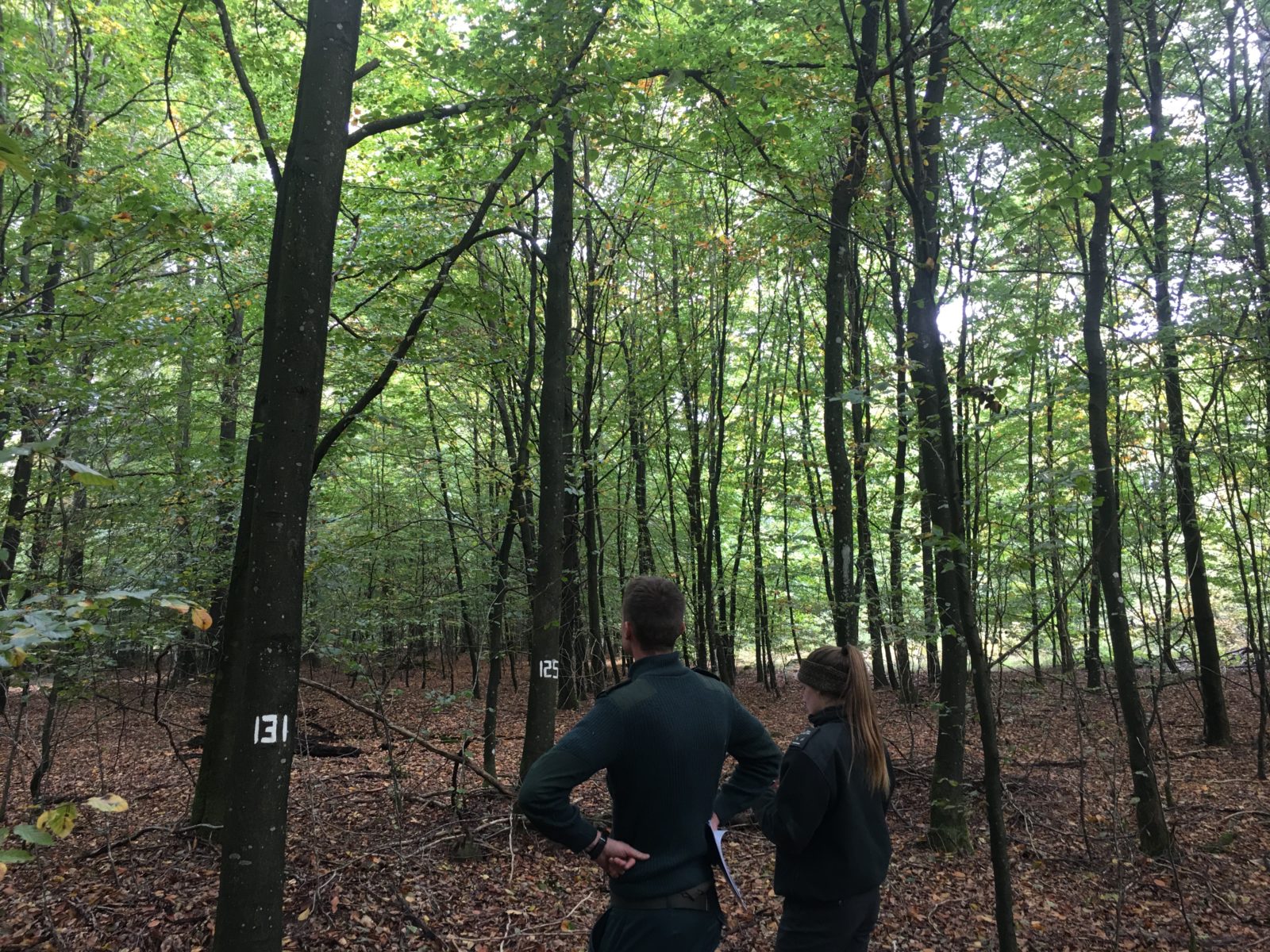
1,5 jour
SNA
Parcours de formation nouveaux agents
- Structure and contents of the triage book (CAR)
- fichierecologique.be 1. Concept of and basis for the tool (FEE1)
- Réception des plants forestiers (PLANT)
- Various sites in Wallonia
- ㅤInscription via chacun des modules

1/2 DAY
CAR
Structure and composition of the triage book
Quality research has always guided foresters in their management actions. Recognising the main defects in standing and felled timber is of great importance in gaining a more accurate view of what a forester is producing in his or her stands.
• To know how to recognise the main defects in standing timber.
To understand the impact of defects on wood processing and the main outlets for different qualities.
• To recognise the defects and peculiarities specific to certain species (oak, beech and maple).
• To understand the qualitative classification of standing timber (A, B, C, D)
• Exposé en salle sur la structure du carnet de triage et les nouveautés en matière d’aménagement (nouvelles notions de série-objectif et de vocation, différences entre îlot et parcelle, etc.).
• Exercices pour permettre de comprendre et d’assimiler la distinction entre îlot et parcelle, ainsi que les choix effectués en matière de description et d’aménagement.
- ㅤMarche-en-Famenne (en salle)
- Max. 10 participants
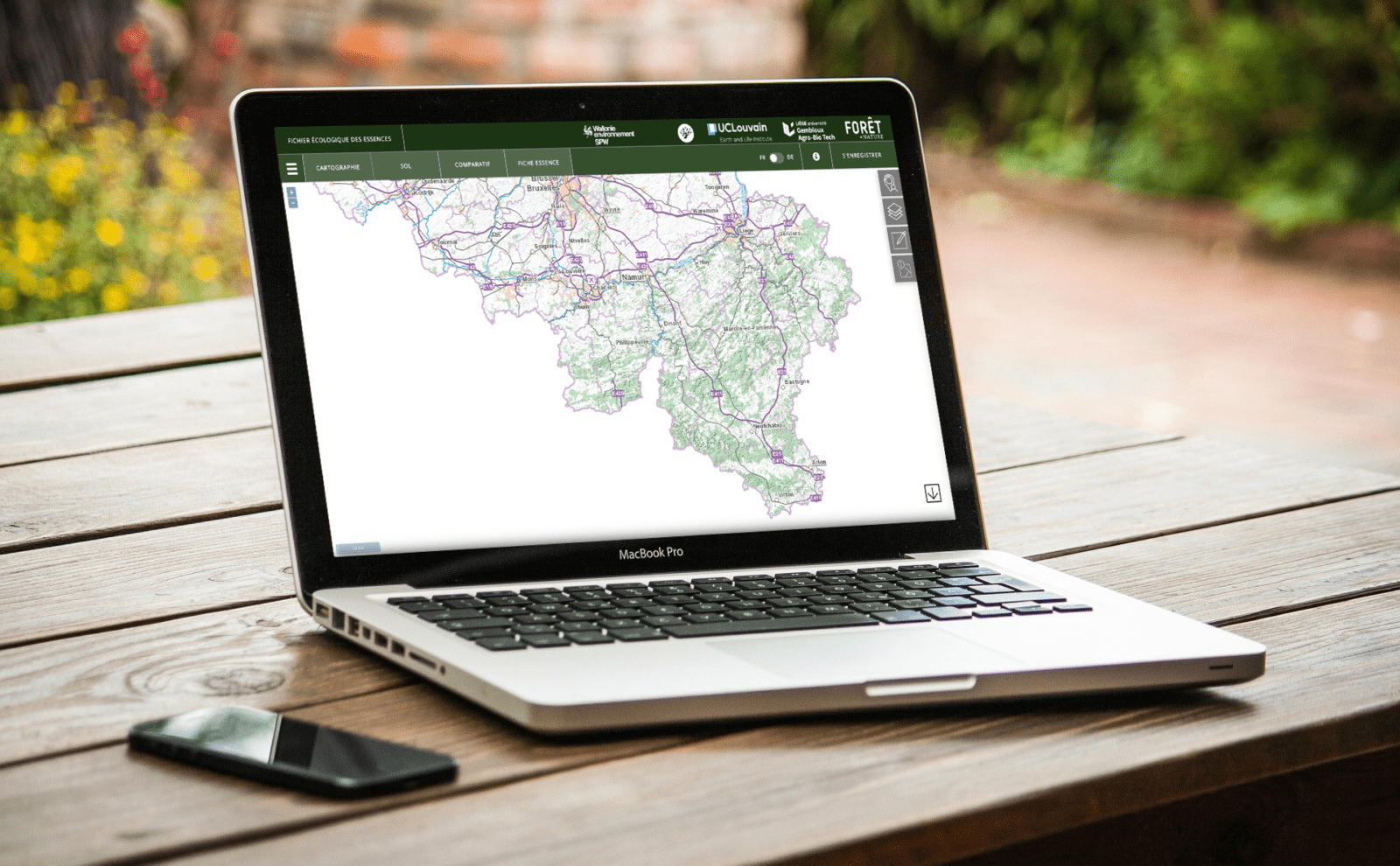
1/2 DAY
FEE1
fichierecologique.be – 1. Purpose of the tool and its basis for use
For several decades now, forest stands have faced a number of extreme events, both climatic and biotic. Consequently, species-station suitability is essential to ensure the resilience of forests, and establishing each species in its habitat is a major challenge for foresters.
This half-day spent using fichierecologique.be aims to inform users about this tool so that they can use it to the best of its potential. There are also some review activities such as reading and interpreting the soil map of Wallonia. Finally, some practical exercises help illustrate the theoretical concepts.
• To understand how to use fichierecologique.be to its full potential.
• To read and interpret the soil map of Wallonia.
• To understand the concepts of autecology of species.
• To recognise the main characteristics of the species.
• Presentation of the fichierecologique.be tool
• Presentation of the soil map of Wallonia
and its legend.
• Exercises carried out on the main types of soil.
de sol.
- ㅤMarche-en-Famenne (en salle)
- Max. 10 participants

1 day
LISO
Lisieroscope: establishment and management of the forest edge
When properly managed, the edges, transitional environments between the forest and open spaces, are true oases of life welcoming a large number of species. They bring many benefits: an increase in biodiversity, protection of stands against sunburn and wind turbulence, as well as the creation of a more diverse landscape.
As part of this training, everyone will be able to practice simulated tree marking using a lisieroscope in favour of a structured and diversified forest edge. lisièroscope.
The lisieroscope is an exercise area which allows the intensity and character of each tree marker’s harvesting practice to be analysed according to different criteria. It consists of an area of just over one hectare set up on the outer edge, where all the trees are numbered and mapped. The variables taken from each inventoried tree are: species, circumference, presence of dendromicrohabitats, ecological value of the trees, economical quality, as well as various observations (narrow crown area, health status, pillar tree, etc.).
- To recognise the different methods of development and maintenance of structured and mixed forest edges.
- To recognise the benefits of a structured and mixed forest edge.
- To design the technical implementation: planning, choice of sites to be developed, choice of establishment and maintenance methods.
- To practice tree marking to maintain a structured and diverse forest edge.
- Performance of an exercise in marking a forest edge using a lisieroscope
- Analysis of the results according to ecological, forestry, landscape and economical aspects. The analysis is carried out using software and is followed by a real-life activity in the field.
- Discussion on techniques, possible obstacles, etc.
- ㅤNassogne ou Assesse
- Max. 10 participants
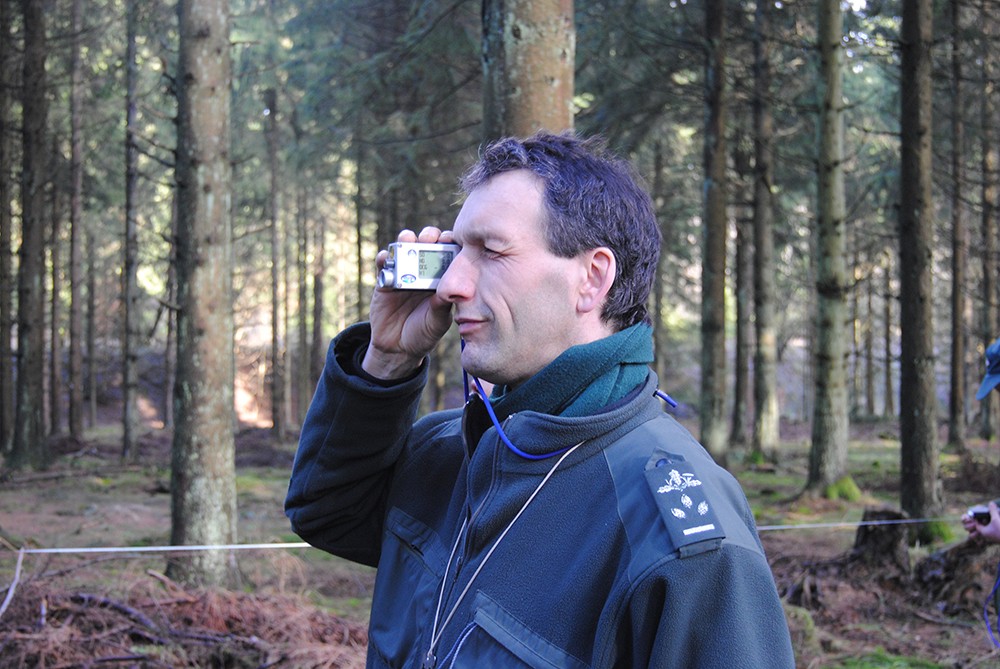
1/2 DAY
GHD
Mesure de la surface terrière et de la hauteur dominante
La formation a pour but de présenter les notions et l’intérêt de la mesure de la surface terrière et de la hauteur dominante. Les différents instruments de mesure seront présentés et testés sur le terrain.
• Définir la notion et l’intérêt de la mesure de la surface terrière et de la hauteur dominante.
• Prendre des mesures de surface terrière et de hauteur dominante sur le terrain.
• Aborder les limites des instruments de mesure utilisés.
• Courte présentation pratique des deux notions abordées.
• Exercice de mesures dans des peuplements.
- ㅤMarche-en-Famenne, La Roche ou Namur
- Max. 10 participants
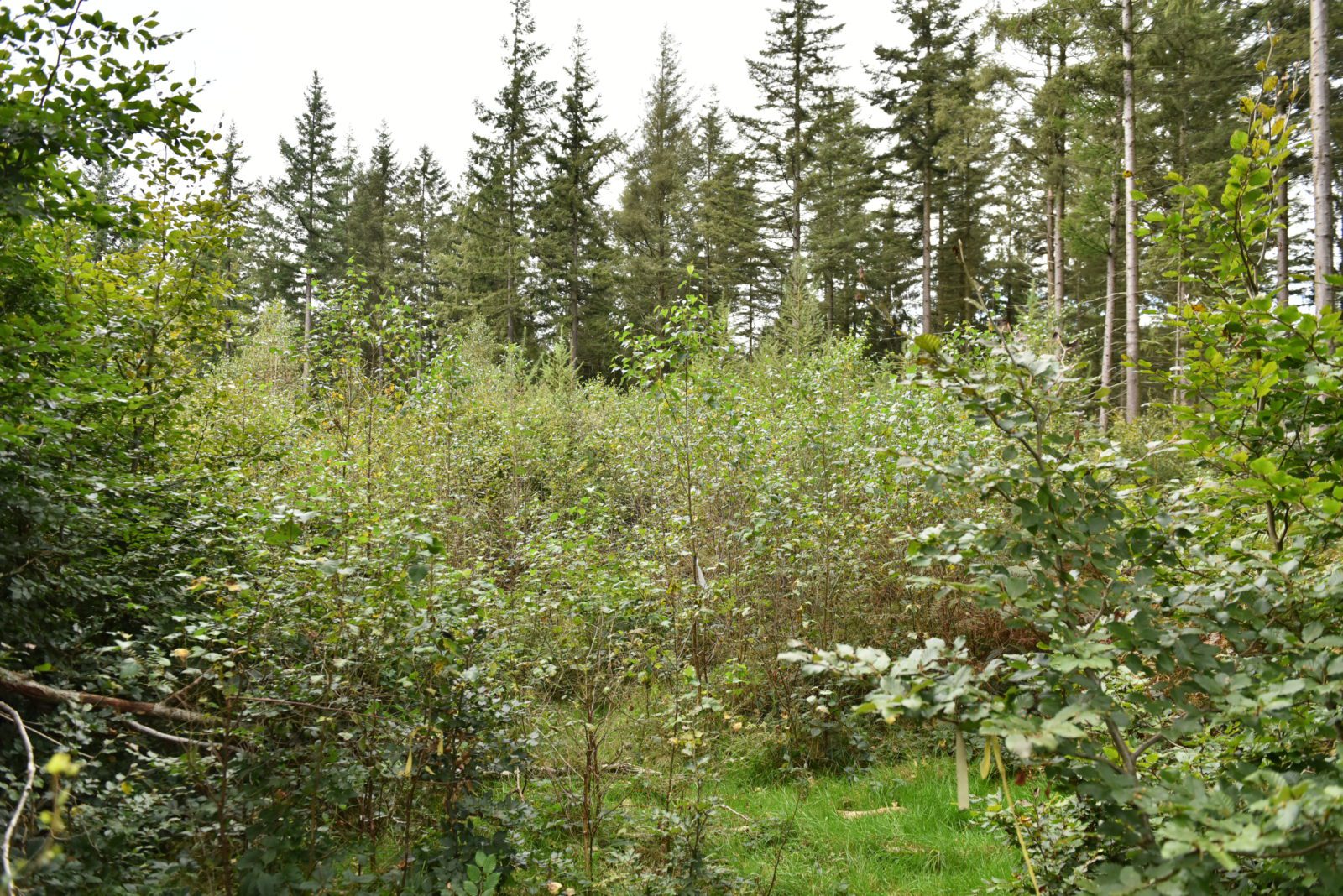
1 day
FEE5-A
fichierecologique.be – 5. Catalogue des stations forestières d’Ardenne
Le catalogue de stations d’Ardenne synthétise les caractéristiques des principaux milieux forestiers présents au sein d’une région bioclimatique. Son objectif est de fournir des conseils de gestion adaptés aux conditions écologiques d’une parcelle forestière.
This tool, provided free of charge a fichierecologique.be uses the results of a field diagnosis to determine the type of station for a specific plot.
For each of the forest stations, a detailed description includes the constraints and opportunities, compatible species together with their strengths and weaknesses, natural habitat, as well as management recommendations.
• Savoir utiliser le guide d’identification des stations forestières d’Ardenne
• To know how to interpret management recommendations.
• To explore the main ecological constraints for species, depending on station conditions and in the context of climate change.
• Identification of several stations in the relevant bioclimatic zone. Field diagnosis is based on the analysis of the topography, soil and vegetation.
• Evaluation of the potential of these different stations.
- ㅤRégion de La Roche-en-Ardenne/Samrée
- ㅤMax. 8 participants
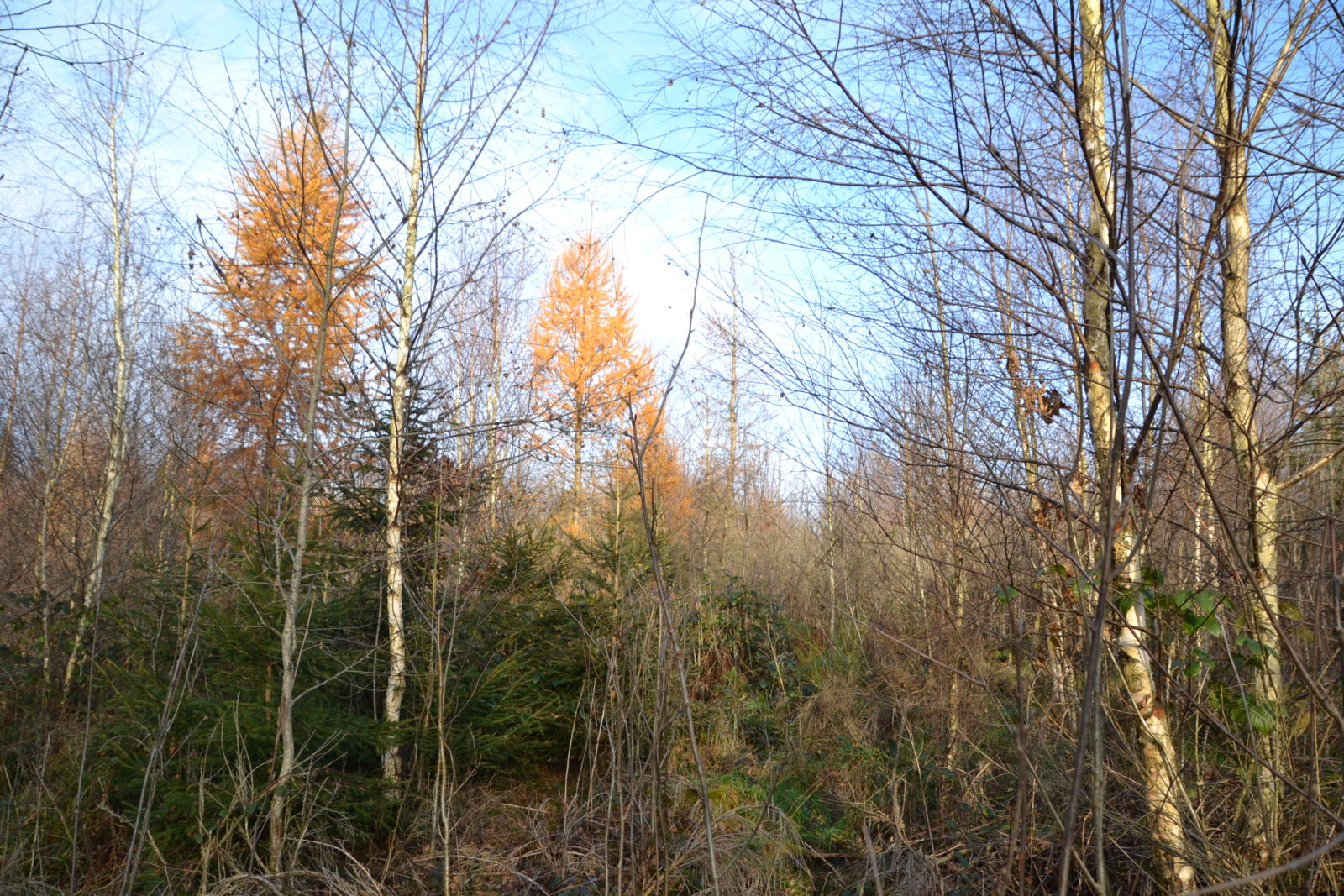
1 day
BOU
Birch silviculture
Birch is a species widely present in the forests of Europe. However, it receives little attention from a forestry point of view due to the low quality of the current logs produced and its low value locally. It nevertheless presents major advantages for both the ecosystem and the wood industry. In fact, it can live in a wide range of station conditions and can be put to a variety of uses.
To produce quality wood that can be used for purposes other than firewood, it is essential to take the tree’s requirements into account and apply rigorous silviculture, at the right time and with the right intensity.
• To know the requirements of birch
• To be able to select future birches at the right time
• To know the limits of formative and regular pruning of birch
• To recognise the main defects in logs
• To carry out silviculture aimed at the production of quality wood in different situations
• Visit involving a training tool for thinning
• Study of exemplary stands
• Exercises involving selection and thinning within stands
- ㅤNassogne
- Max. 10 participants

